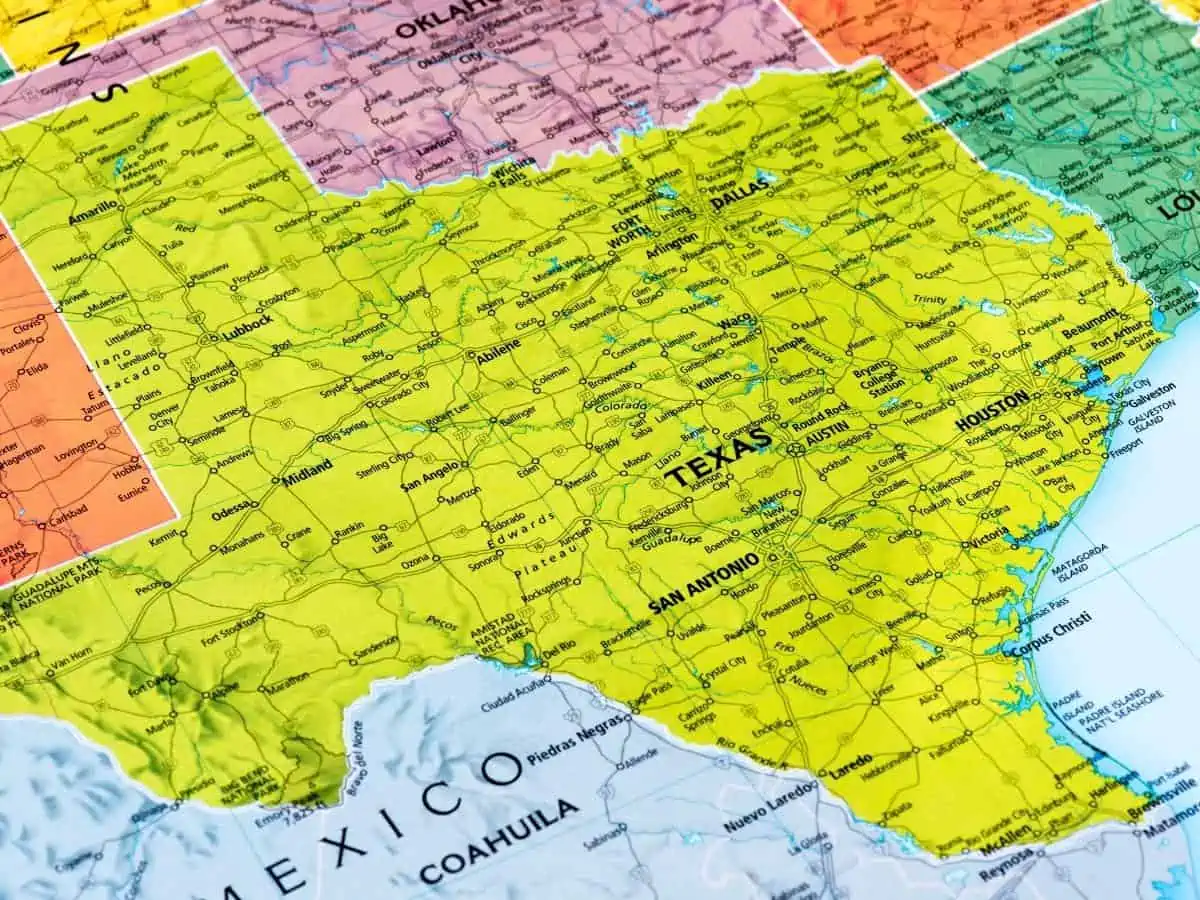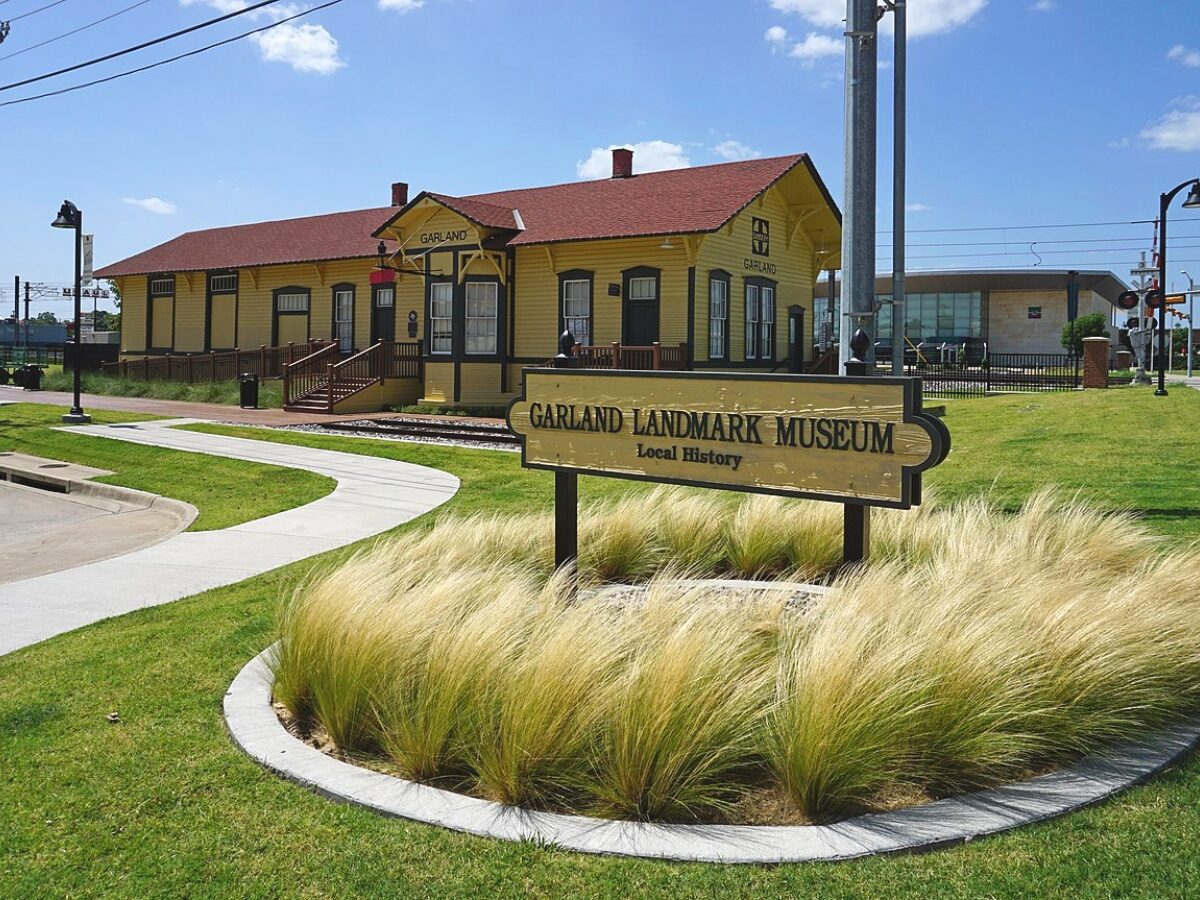Share the post "A Name with History: Texas and Its Fascinating Origins"
Figuring out how Texas got its name can help you understand the state’s history from a different perspective, and it can be full of interesting facts, too!
The name behind Texas stems from friendship and traces back to the Caddo Native American tribes and their encounters with Spanish missionaries. Today, these origins are reflected in how we see the state as a home to a warm but proud spirit.

How Texas Got Its Name?
Both the state’s official name and the common nickname (Lone Star State) have rich historical origin stories that represent notions of friendship, goodwill, and the everlasting desire for independence.
Let’s take a closer look at how we got to know the state by both names throughout history:
Texas Is Caddoan for Friendship
The first people to live on Texan lands were the Caddo Native American confederacies. When the Caddos first came across Spanish missionaries led by Damián Massanet, they called them “teycha,” which meant friend in Caddoan languages.
Soon, the name was derived in correspondence and documentation. It shifted from Tejas to Texas, but it still held the same connotation despite the change.
However, it’s also worth noting that there’s a second (and less popular) opinion on the matter here, which has nothing to do with friendship.
García Ruiz, a Spanish historian, believes that the name Texas existed long before the first meeting with the Caddo Natives. Even old texts reference the Indian Tejas, which made some people suspicious about the name’s true origin.
Instead, Ruiz came across interpretations of the name as Spanish for yew tree. While that’s yet another possible origin, most people like to go with the flow of the friendship story since it’s more dynamic and touching.

The Lone Star Symbolizes the State’s Pride and Independence
Believe it or not, Texas was a Mexican province at some point before it became the 28th American state that we all know today.
However, there were several uprises demanding separation from Mexican governance. When the state finally got its long-awaited victory, the Texan flag first appeared, with the lone star representing the solitary Republic of Texas.
Of course, that didn’t last long since the land quickly became part of the United States after the annexation in 1845. Yet, the name stood firm throughout the years as a symbol of Texas’ defiant spirit!

How Texas’ Name Origins Reflects on the State
The meanings behind Texas’ naming origins are still relevant today. You can even spot it everywhere around the state, from the official motto to the Texans’ attitude towards strangers.
Let’s take a look at how the state’s official name and nickname tie back to significant themes in the Lone Star State:
1. Texas’ Official Motto Is Friendship
Taking value from its name, the state goes by the motto of friendship. This motto was made official in 1930 with the 41st legislature, which still stands today. You’ll even see it on road signs on the state’s highways.
It even says that friendship is “emblematic of the universal spirit existing in Texas” in the legislature. That pretty much sums up why this motto hit the nail on the head on both the historical and cultural aspects.
2. Texans Adopt a Bubbly Attitude
If you’ve ever been to Texas, you’ll see that the general vibe here is warm. People will treat you like family, introduce you as a friend, and welcome you into their homes with open arms, especially in rural areas.
That’s not a shock when it was the same attitude adopted by the Caddo Natives years back when they welcomed Damián Massanet as a friend and an ally!
That’s not to say everyone in Texas will be bubbly, though. Of course, exceptions exist, but that’s the general image that the state reflects in people’s minds.
3. The Brave Bluebonnet Is Texas’ Official Flower
While the Lone Star State’s official tree is the Pecan, it’s represented by the delicate bluebonnet flower. Don’t let its dainty look and petite petals fool you, though.
It’s native to Texas and became integral to the people there as it witnessed wars and uprisings. For many people, the bluebonnet is a symbol of bravery. Even the rare pink cultivar was used to remember dead soldiers and their sacrifices.
When you think about it, even this aspect matches the reason behind the state’s nickname with connotations of pride and defiance.

How Texas Got Its Name: FAQs
Is the Caddoan language still used in Texas?
Caddoan isn’t one language but an aggregate of different tongues spoken by the Caddo Peoples. In the same category, there are a few languages to consider:
*Caddo
*Wichita
*Pawnee
*Arikara
*Kitsai
Unfortunately, they’re on the verge of perishing away as ancient languages. Yet, the Caddoan will always be remembered for its influence on naming Texas and shaping its image.
How long was Texas called a Republic?
In the period between 1836 and 1845, Texas was an independent entity. It was referred to as the Republic of Texas instead of being a Mexican province or the 28th U.S. state during that time.
Was the Lone Star flag always used in Texas?
No, there was a version of the flag with two stars instead of one at some point. One star stood for Texas, while the other represented Coahuila. This is often called the “Coahuila y Texas” flag, which was particularly common from the 1820s to the 1830s.
However, the “Lone Star” version of the flag stuck in people’s minds. In no time, it became synonymous with the name Texas itself, and it’s still standing today.
References
- Meant friend in Caddoan: history.com
- 41st legislature: statesymbolsusa.org
- Verge of perishing away: unesdoc.unesco.org
Share the post "A Name with History: Texas and Its Fascinating Origins"
Christian Linden is a seasoned writer and contributor at Texas View, specializing in topics that resonate with the Texan community. With over a decade of experience in journalism, Christian brings a wealth of knowledge in local politics, culture, and lifestyle. He holds a Bachelor's degree in Communications from the University of Texas. When he's not writing, Christian enjoys spending weekends traveling across Texas with his family, exploring everything from bustling cities to serene landscapes.











